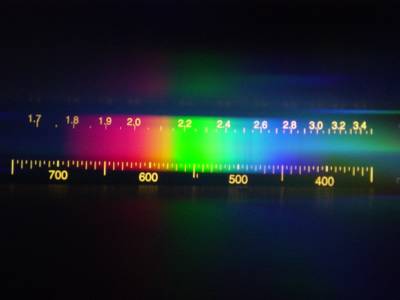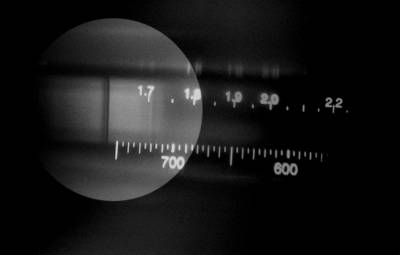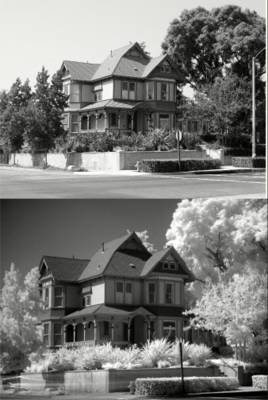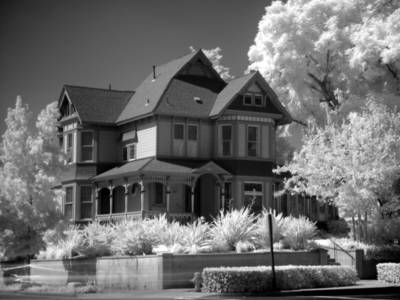The text books say no, that the visual spectrum is between 700nm and 400nm, and that the infrared wavelength is from 700nm and above. I accepted this until I was looking through the Infrared filter I've been using to take my Infrared pictures with using a paper tube to block out the white light. The IR filter is very dark, but after a few minutes my eyes adjusted and I could see through it. The trees and shrubs looked white just like the pictures I have taken. This got me thinking. Why was I able to see through the filter if you can't see in the Infrared spectrum? I figured the answer was that the filter let some of the visible spectrum through as well. To test this theory, I used my spectrometer I bought from Edmund Scientific, held the IR filter in front of the slit aperture and found I had to point it at the sun to get enough light through to see anything, and to my surprise, I saw a dark red band from 700nm fading at around 800nm. No "Visible" light could be seen from 700nm and lower, so the IR filter was doing it's job. From this experiment the answer seems to be "yes" you can see IR and "no" you can't. When I look through the spectrometer at sunlight reflected off a white card (you can't look directly at the sun with the spectrometer because it's too bright) all I see is the visible spectrum everyone else sees. Remember, I had to point the spectrometer at the sun to get enough light through the IR filter so I could see something, and from this I gathered that "yes" you can see IR, but your eyes are not that sensitive to it as it is to the visible spectrum, just like your digital camera is. And just like the digital camera, I had to force enough light through to see something. This is why exposures are so long (around 15 seconds) unless you use the "night shot mode" which removes the IR blocking filter in the camera.
There is the possibility I could be wrong, after all I didn't get a grant from the government to buy the proper equipment to do a study, but I would love to hear from someone who could test this theory.





